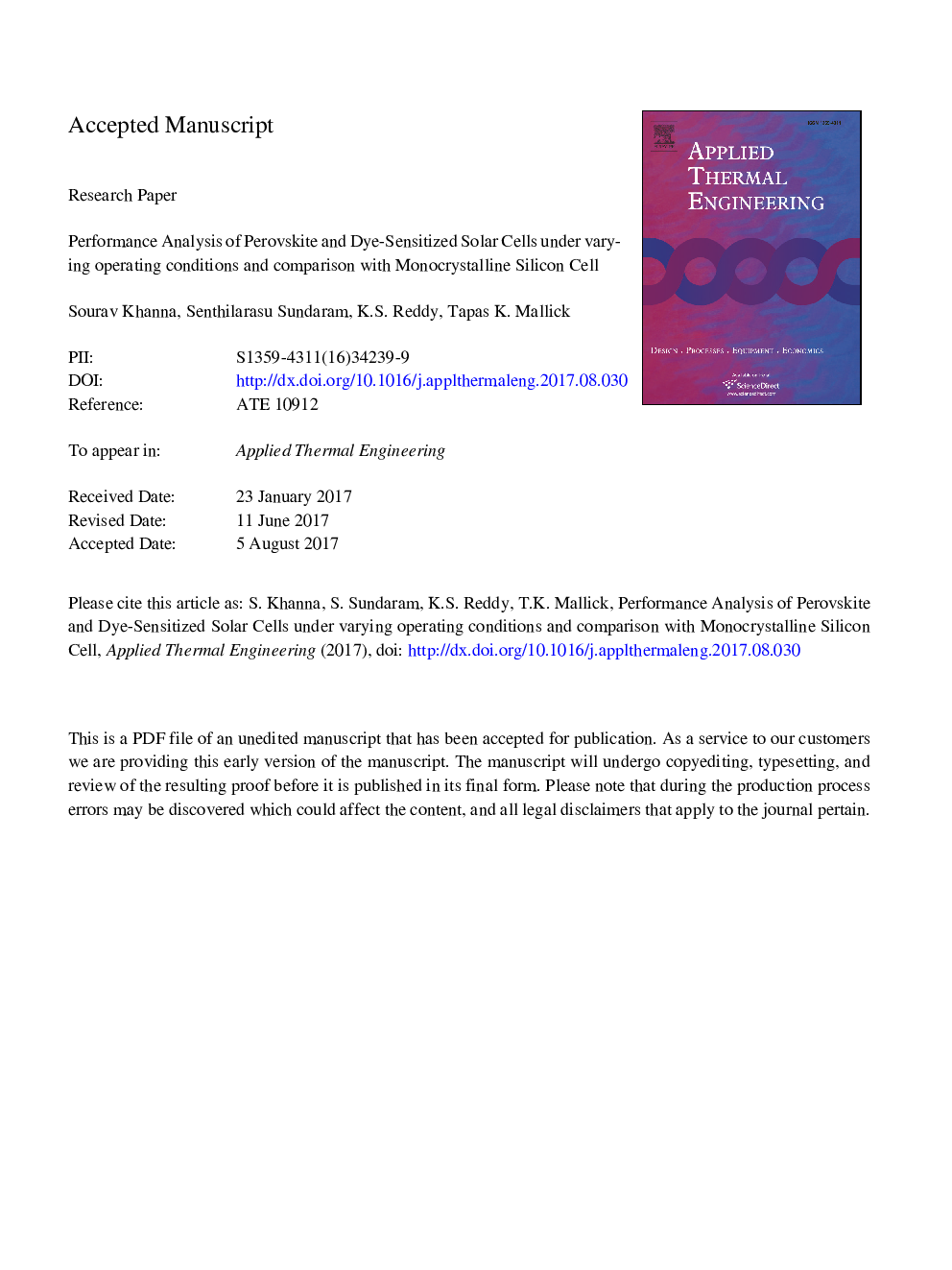| Article ID | Journal | Published Year | Pages | File Type |
|---|---|---|---|---|
| 4990743 | Applied Thermal Engineering | 2017 | 19 Pages |
Abstract
The efficiency of solar cell is generally defined at standard test conditions. However, wind direction, wind velocity, tilt angle of panel and solar radiation during operation differ from those at standard test conditions. The effects of operating conditions on the temperature and efficiency of silicon solar cells are widely analysed in literature. In the current work, the thermal performance of perovskite and dye-sensitized solar cells in operating conditions has been analysed and compared with monocrystalline silicon solar cell. The effects of wind direction (wind azimuth angle), wind velocity, tilt angle of panel and solar radiation on the temperature and efficiency of the cells have been analysed. The results show that as wind azimuth angle increases from 0° to 90°, the temperature of the cell increases from 51.8 °C to 58.2 °C for monocrystalline silicon, from 45.5 °C to 50.7 °C for perovskite and from 48.4 °C to 53.9 °C for dye-sensitized solar cell and the corresponding efficiency of the cell decreases from 22.3% to 21.5% for monocrystalline silicon, from 20.1% to 19.5% for perovskite and from 11.8% to 11.7% for dye-sensitized solar cell.
Related Topics
Physical Sciences and Engineering
Chemical Engineering
Fluid Flow and Transfer Processes
Authors
Sourav Khanna, Senthilarasu Sundaram, K.S. Reddy, Tapas K. Mallick,
